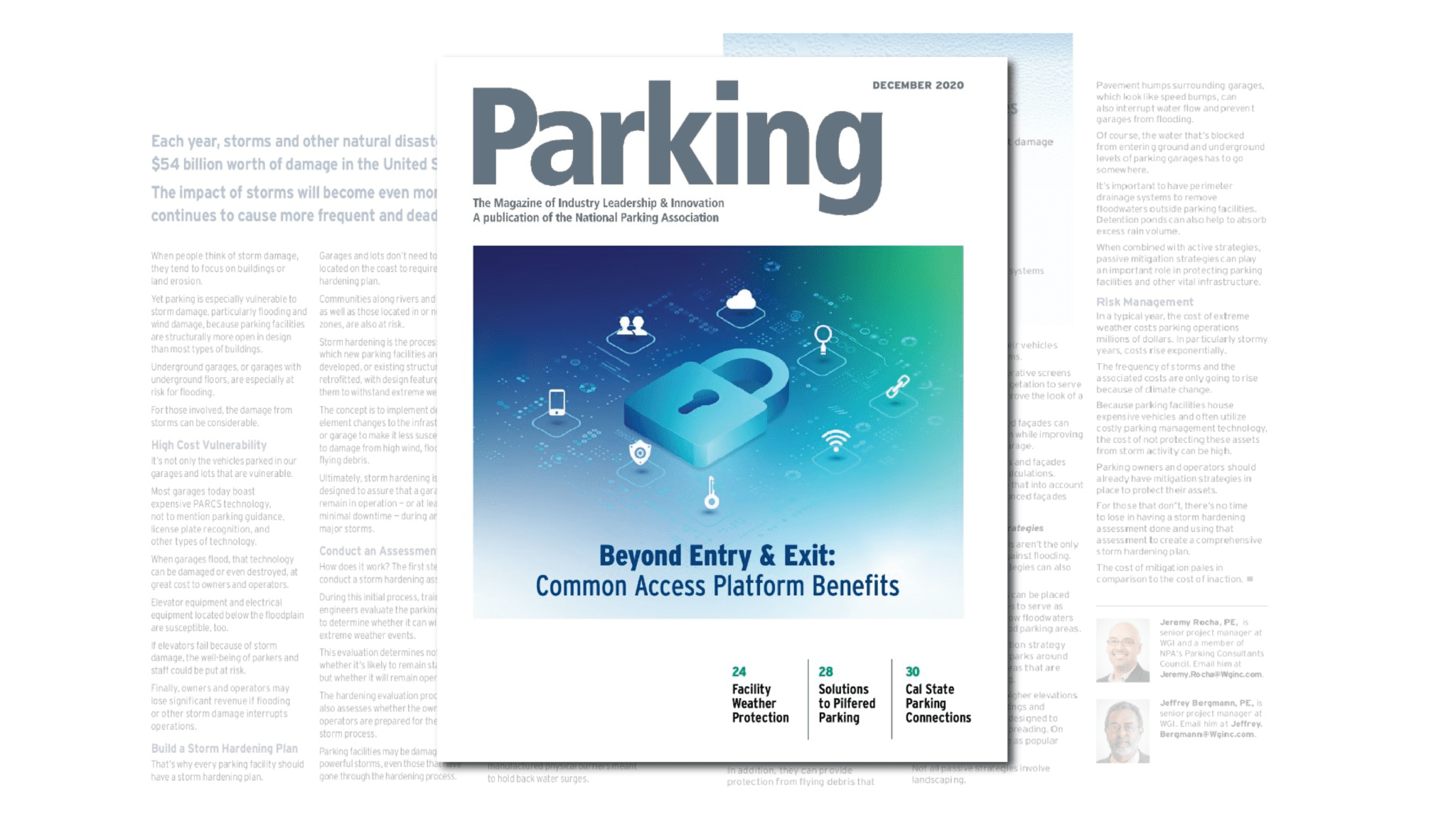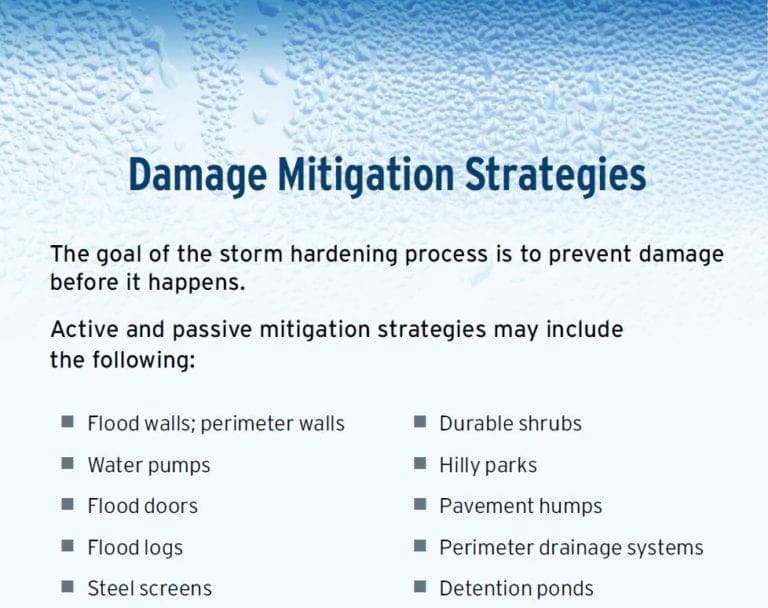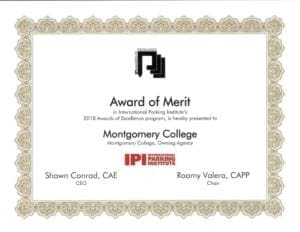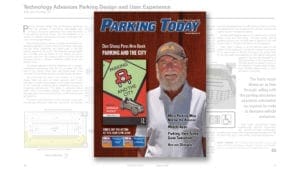
Video: Introduce a Girl to Engineering Day – Girl Day 2020
With more than 1,400 volunteers from UT Austin, nonprofit organizations, and AEC firms, Girl Day has become the largest event of its kind in the United States!
Learn from award-winning professionals — explore our whitepapers, blogs, and the latest industry updates.
Join our dynamic organization of engineers, land surveyors, landscape architects, environmental scientists, and architects!
Talk to a market leader today! We’ll answer any questions you have about our professional services.

This article appeared in the December 2020 issue of Parking Magazine. Click here to view the full article on Page 24.
When people think of storm damage, they tend to focus on buildings or land erosion.
Yet parking is especially vulnerable to storm damage, particularly flooding and wind damage, because parking facilities are structurally more open in design than most types of buildings. Underground garages, or garages with underground floors, are especially at risk for flooding.
For those involved, the damage from storms can be considerable.
It’s not only the vehicles parked in our garages and lots that are vulnerable.
Most garages today boast expensive PARCS technology, not to mention parking guidance, license plate recognition, and other types of technology. When garages flood, that technology can be damaged or even destroyed, at great cost to owners and operators.
Elevator equipment and electrical equipment located below the floodplain are susceptible, too. If elevators fail because of storm damage, the well-being of parkers and staff could be put at risk.
Finally, owners and operators may lose significant revenue if flooding or other storm damage interrupts operations.
That’s why every parking facility should have a storm hardening plan.
Garages and lots don’t need to be located on the coast to require a hardening plan.
Communities along rivers and lakes, as well as those located in or near flood zones, are also at risk.
Storm hardening is the process through which new parking facilities are developed, or existing structures are retrofitted, with design features to allow them to withstand extreme weather.
The concept is to implement design element changes to the infrastructure or garage to make it less susceptible to damage from high wind, flooding, or flying debris. Ultimately, storm hardening is designed to assure that a garage can remain in operation — or at least have minimal downtime — during and after major storms.
How does it work? The first step is to conduct a storm hardening assessment.
During this initial process, trained engineers evaluate the parking facility to determine whether it can withstand extreme weather events.
This evaluation determines not just whether it’s likely to remain standing but whether it will remain operational. The hardening evaluation process also assesses whether the owners and operators are prepared for the after-storm process. Parking facilities may be damaged by very powerful storms, even those that have gone through the hardening process.
If that happens, owners and operators must be prepared to navigate the Federal Emergency Management Agency aid process, which is complicated and cumbersome.
All owners and operators should have a response plan in place for handling disaster mitigation and storm recovery. Those plans should include a strategy for documenting storm damage and applying for federal assistance.
Ultimately, of course, the goal of the storm hardening process is to prevent damage. From an engineering perspective, hardening strategies can be divided into two categories: active and passive mitigation strategies.
Active Mitigation Strategies
These strategies revolve around manufactured physical barriers meant to hold back water surges.

Active mitigation can include the erection of flood walls and perimeter walls to prevent flooding, and installation of water pumps to remove flooding that does breach the walls.
The addition of new protective walls need not undermine the aesthetics of a building, as virtually any façade material can be used in them. Other pre-storm strategies can also help protect parking facilities. For instance, flood doors can close; flood logs can prevent water from reaching parking areas and infrastructure.
Also, some garages use deployable barriers that can be anchored into concrete walkways and sidewalks outside garages, then removed and securely stored after the storm passes. Elevator cars can be set to reside at a higher floor rather than basements that may flood.
These strategies require that swift action be taken before a storm hits. They are laid out in an emergency preparedness plan typically developed by a parking consultant. Steel screens located in the openings between parking floors can provide protection from flying debris.
Typically, the screens are intended to be decorative or to enhance safety by preventing people from jumping from upper parking floors.
In addition, they can provide protection from flying debris that could hit drivers or their vehicles during high-wind storms. Sometimes, these decorative screens are covered in living vegetation to serve as a green wall and improve the look of a garage’s façade.
Or permanent enhanced façades can also serve as protection while improving the aesthetics of the garage. However, these screens and façades could affect open air calculations. Designers need to take that into account when considering enhanced façades and screens.
Passive Mitigation Strategies
Manufactured materials aren’t the only weapons in the fight against flooding. Natural landscape strategies can also be applied.
Strong, durable shrubs can be placed around parking facilities to serve as windbreaks and help slow floodwaters that may otherwise flood parking areas. Another useful mitigation strategy is the creation of hilly parks around parking facilities in areas that are susceptible to flooding.
The parks are built to higher elevations than surrounding buildings and infrastructure and are designed to stop floodwater from spreading. On sunny days they double as popular recreational spots.
Not all passive strategies involve landscaping. Pavement humps surrounding garages, which look like speed bumps, can also interrupt water flow and prevent garages from flooding. Of course, the water that’s blocked from entering ground and underground levels of parking garages has to go somewhere.
It’s important to have perimeter drainage systems to remove floodwaters outside parking facilities. Detention ponds can also help to absorb excess rain volume.
When combined with active strategies, passive mitigation strategies can play an important role in protecting parking facilities and other vital infrastructure.
In a typical year, the cost of extreme weather costs parking operations millions of dollars. In particularly stormy years, costs rise exponentially.
The frequency of storms and the associated costs are only going to rise because of climate change. Because parking facilities house expensive vehicles and often utilize costly parking management technology, the cost of not protecting these assets from storm activity can be high.
Parking owners and operators should already have mitigation strategies in place to protect their assets. For those that don’t, there’s no time to lose in having a storm hardening assessment done and using that assessment to create a comprehensive storm hardening plan.
The cost of mitigation pales in comparison to the cost of inaction. Contact us today to have a discussion about your storm hardening plan.

WGI is a national design and professional services firm leading in technology-based solutions for the construction of public infrastructure and real estate development. At WGI, we’re providing Tomorrow’s Infrastructure Solutions Today.

With more than 1,400 volunteers from UT Austin, nonprofit organizations, and AEC firms, Girl Day has become the largest event of its kind in the United States!

WGI took home three Awards of Merit in International Parking Institute’s (IPI) 2018 Awards of Excellence program.

Despite campus parking returning to pre-COVID demand, university parking departments are being asked to do more with less.

Parking structure design has tremendously advanced with the adoption of innovative technologies that enhance the user’s experience.

Discover how WGI seamlessly blends urban connectivity with natural conservation in the Clear Lake Trail & Boardwalk project, integrating innovative design and engineering to enhance the landscape while preserving the purity of Clear Lake, West Palm Beach’s primary drinking water source.

WGI is pleased to announce it joined forces with award-winning parking consulting and structural engineering provider Carl Walker, Inc..
You’ve been searching for a place like WGI. We look forward to meeting you soon.
Sign up to receive emails to hear our latest news and achievements in our monthly newsletter.
Enter your zip code, and we’ll personalize your experience with local projects, office locations, team members, and more.
WGI supports its associates with meaningful opportunities for growth, strong benefits and perks, while we work collaboratively with clients and co-consultants to shape and improve communities.






WGI is a dynamic organization with opportunities nationwide for engineers, land surveyors, landscape architects, environmental scientists, and architects.